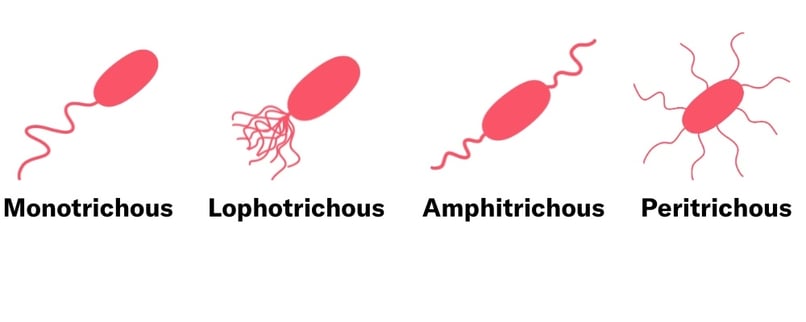Microorganism Spotlight - Bacteria

You wake up one morning and do not feel well, with a cough and fever, only to find out, unfortunately, you have an infection. On another day, you have Greek yogurt for breakfast, and on the way to work, you fill up your car tank at the gas station with ethanol-blended gasoline. What ties these very different situations together? The answer is bacteria. From the causative bacteria of pneumonia symptoms to the ones used in fermented foods to ethanol, bacteria have many diverse and impacting roles in our everyday lives.
Unlocking the World of Bacteria
Despite their tiny size, microorganisms hold great power in shaping whole ecosystems, and performing biochemical processes. Among microorganisms, bacteria represent one of the most exciting groups of importance in health, diseases, and industry. These are unicellular and prokaryotic microorganisms, unique in that there is no nuclear membrane; instead the genetic material consists of one circular DNA molecule inside the nucleoid in bacteria.
Diverse Habitats and Morphologies
The diversity in the bacterial world exists from deep-sea hydrothermal vents to the human gut. The morphological classification of Bacteria has an extensive range according to different criteria.
Bacteria are classified into groups based on their basic shapes. The bacterial cell wall and cytoskeleton determine these shapes, which can affect how bacteria acquire nutrients, attach to surfaces, swim, and escape predators.
-
- Spherical (also known as Cocci): Spherical bacteria which can be found as single cells (coccus) or in pairs (diplococci), chains (streptococci), or clusters (staphylococci).

- Bacilli: Rod-shaped bacteria, which can be single or in chains.
- Spirochetes: Spiral-shaped bacteria with a unique locomotion mode using axial filaments, or flagella. The arrangement and number of flagella can also be used to further classify bacteria into one of four groups:
- Monotrichous: A single flagella at one end
- Lophotrichous: A cluster of flagella at one end
- Amphitrichous: Either a single or cluster of flagella at both ends of the cell
- Peritrichous: Flagella arranged along the sides of the bacteria
- Monotrichous: A single flagella at one end
- Spherical (also known as Cocci): Spherical bacteria which can be found as single cells (coccus) or in pairs (diplococci), chains (streptococci), or clusters (staphylococci).

The diversity in bacterial shapes and arrangements provides several evolutionary advantages, helping bacteria adapt to various environments and enhancing their survival and functionality. For example, the spherical shape of cocci minimizes surface area relative to volume, which can reduce water loss in dry environments and help retain moisture. Rod-shaped bacteria have a higher surface area to volume ratio than cocci, allowing for more efficient nutrient uptake and waste elimination.
Another way to identify bacteria is through the use of a a Gram stain. In this laboratory test, bacteria is exposed to a purple coloured dye, known as crystal violet, which results in two morphological staining classes: gram-positive and gram-negative bacteria. While gram-positive bacteria have a thick peptidoglycan layer and stain purple, gram-negative bacteria have a thinner peptidoglycan layer and an outer membrane, staining pink.

Metabolic Pathways and Oxygen Requirements
In addition to their morphological diversity, bacteria are highly adaptable, with metabolic pathways that allow them to survive in extreme conditions, such as high temperatures, acidic environments, and even oxygen deprivation conditions. This adaptability is due to their versatile metabolic capabilities, including aerobic and anaerobic conditions, and photosynthesis in some species.
One of the reasons behind the differences in metabolic conditions is the presence or absence of oxygen. Bacteria that require oxygen to grow are called obligate aerobics, one such example is Bacillus subtilis. Other bacteria can grow only without oxygen, such as methanogens and ethanogens bacteria. Bacteria are called obligate anaerobes, such as Clostridium; in some cases, oxygen can poison some of their enzymes. In addition, facultative anaerobes can change their metabolic pathway depending on the presence of oxygen, which is called, in that case, reparation, or in the absence of oxygen, that is called fermentation, such as E. coli.
Quorum Sensing: Bacterial Communication
You may be interested in knowing how bacteria have a way of communicating and adapting to their environment. Quorum sensing is a process in which bacteria send out and receive chemical signals to coordinate action depending on the population present. Several centuries before humankind ever invented the means for sharing digital information, bacteria were exchanging information to regulate their behaviour in a manner that guaranteed their survival. This communication allows them to adapt, survive, and even regulate their metabolic pathways and gene expression in the face of stress, which is made possible by this incredible resilience.

Bacteria in Biotechnology and Industry
The diverse world of bacteria used in different industries has generated interest in bioprocess engineering and the development of biotechnology based on the fermentation process. As explained above, bacteria are essential because they provide nutritional products, medicines, and biofuels. This has generated interest in developing various bacterial strains to improve multiple bioproducts. Accordingly, the designed bioprocess should be able to process several wild and engineered bacterial strains. This adaptation requires real-time process control on biomass measurement to obtain thorough and instant analysis.
Want to see data for your organism or application?
We have tested over 100 microorganisms for more than 50 different applications with our technology.